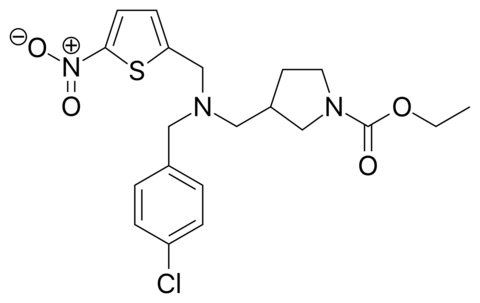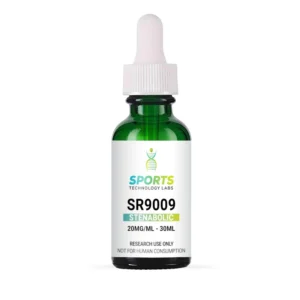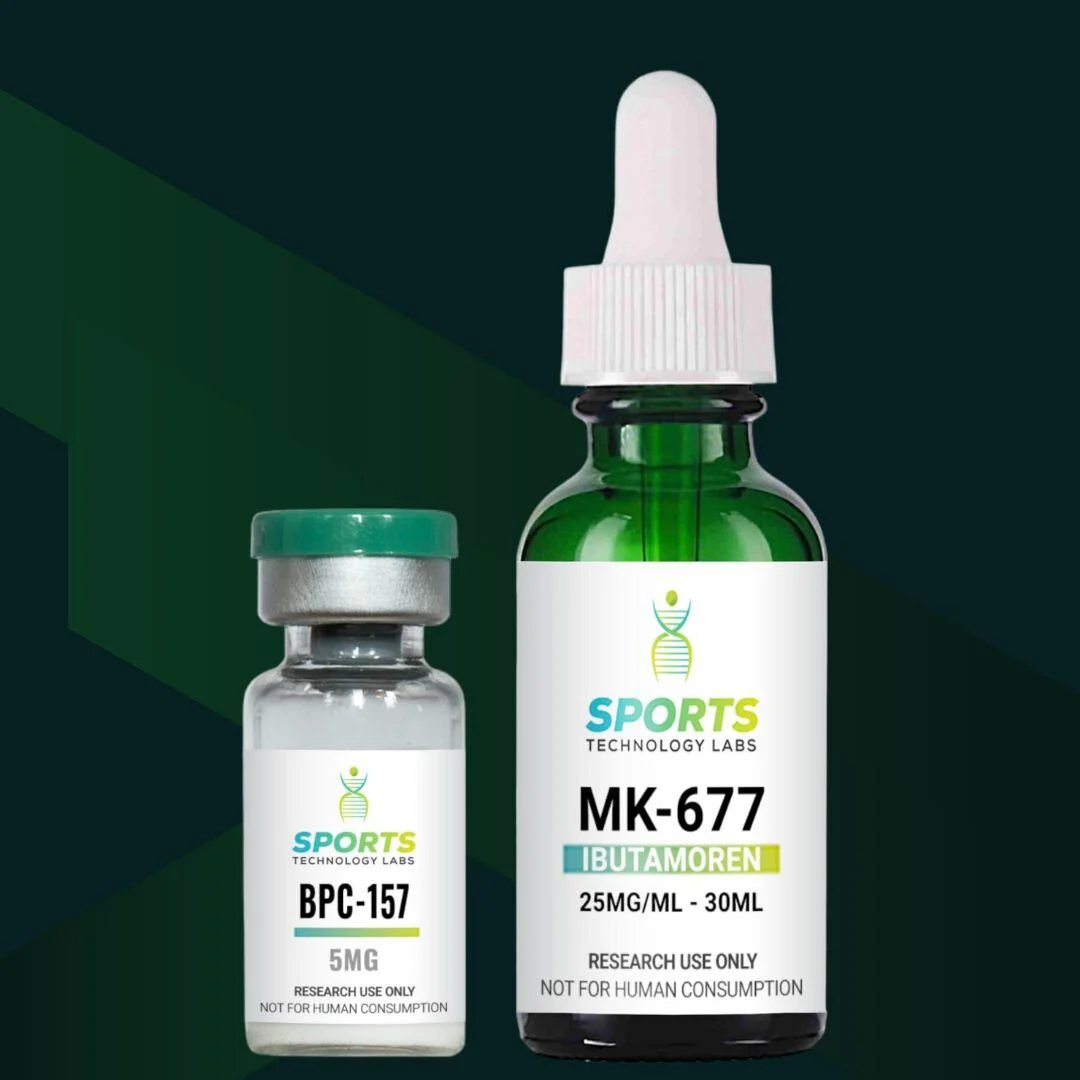

Stenabolic is not a SARM but rather a potent, non-addictive Nootropic in the REV-ERB agonist category. REV-ERB proteins regulate the body’s core clock and circadian rhythm, they alter the expression of genes involved in lipid and glucose metabolism, cartilage breakdown, and scientists are studying their ability to reduce the risk of heart disease via atherosclerosis.
Stenabolic Research
Several studies suggest that Stenabolic and other REV-ERB agonists may maintain wakefulness in pathological conditions that affect sleep. SR-9009 can induce wakefulness at different times during the light period and retains its efficacy even when administered throughout the day.
SR-9009 has been demonstrated in vitro and in vivo to increase basal oxygen consumption, decrease lipogenesis, increase mitochondrial content of muscle tissue, reduce fat storage, and increase glucose and fatty acid oxidation in skeletal muscles. These effects have increased research on this compound for several metabolic disorders.
Stenabolic SR-9009 Research Continued
REV-ERB proteins have been shown to function as transcription repressors in articular cartilage. Chondrocytes with known catabolic agents cause the induction of REV-ERB alpha as a defense mechanism, whereas stimulation with anabolic agents decreases REV-ERB activity.
Overexpression of REV-ERB activity is shown to decrease matrix-degrading enzymes like matrix metalloproteinase 13 and aggrecanase.
Recent studies have also linked REV-ERB proteins to reduced risk of atherosclerosis. REV-ERB knockout mice have shown increased atherosclerosis, while atherosclerotic mice given SR-9009 twice per day showed improvement in atherosclerotic lesions as well as significant improvements in plasma lipid levels.
Stenabolic SR-9009 Research: Oral Squamous Cell Carcinoma (OSCC)
Recent researchers have designed animal studies related to OSCC. Papagerakis and colleagues designed a rhythmic drug release according to circadian time and studied resetting disrupted circadian rhythm (CR) to minimize drug-related toxicities and enhance treatment efficiency in OSCC.
Previous studies have also indicated potential therapeutic benefits of antacid medication in head and neck squamous cell carcinoma. To evaluate the chemotherapeutic effects of a circadian clock regulating SR-9009 and/or a proton pump inhibitor (Esomeprazole) in OSCC, a study was conducted using HPV- (FaDu) and HPV+ (2A3) OSCC cell lines.
Stenabolic SR-9009 Study Analysis: OSCC
The study analyzed the expression of core clock genes BMAL1 and REV-ERBα in tumor samples generated in vivo by inoculating mice with Eso-treated and untreated OSCC cell lines to better understand the benefits of stenabolic with CR.
The results showed significant differences in gene expression between the two groups, suggesting different mechanisms of action for HPV+ and HPV- OSCC.
In vitro assays using the same OSCC cell lines demonstrated that SR-9009 and Esomeprazole, alone and in combination, inhibited cell viability, proliferation, and migration. The combination showed strong synergistic side effects, resulting in circadian oscillation of gene expression levels for 24-hour cycles after administration.
To optimize anti-cancer effects and minimize toxicity, gene expression profiles were evaluated at various time points after SR-9009 Stenabolic administration. The findings suggest that the circadian clock and SR-9009 stenabolic are closely linked to OSCC outcomes.
Additional research is needed to test Stenabolic SR-9009 in pre-clinical animal models and determine the optimal time of Stenabolic SR-9009’s half-life and delivery. Overall, these results support the development of personalized therapeutic approaches for OSCC based on circadian and clock gene expression.
Using Stenabolic To Replicate Precise Data in Research on Thoroughbreds
SR-9009 and SR-9011 are synthetic agonists that pharmacologically target REV-ERB receptors as metabolic modulators. To detect these compounds in equine plasma, researchers developed and validated a liquid chromatography-tandem mass spectrometry (LC-MS/MS) method.
First, plasma samples were pretreated with methanol for protein precipitation and then loaded onto an ACQUITY ultra-performance liquid chromatography high-strength silica C18 column for chromatographic separation.
The mobile phase consisted of 5-mM ammonium formate in distilled water and 0.1% formic acid in acetonitrile, and a gradient elution was used at a flow rate of 0.25 ml/min. Mass spectrometry was also detected.
The researchers evaluated the method’s linearity, lower limit of quantification, intra- and inter-day precision, accuracy, matrix effect, recovery, and stability. They found that the technique was accurate and reproducible for quantifying SR-9009 and SR-9011.
The developed method was successfully applied to plasma samples of thoroughbreds that were injected intramuscularly with SR-9009. Further testing is needed, as there were no side effects reported from the research above after thoroughbred testing; only methods used to test and replicate the above study parameters were noted.
More Circadian Rhythm Research and Animal Studies
Recent research suggests that the experimental compounds SR-9009, Stenabolic, and SR-9011 alter the amplitude of clock gene expression rhythms and change circadian behavior in mice. Additionally, researchers suggest that they reduce anxiety-like behavior, change sleep architecture, and prevent the development of obesity, seen in body fat, which is often related to mood disorders in rodents. However, as the effects of these REV-ERB agonists on CR are pronounced but short-term, more research is required to investigate their potential usefulness in mood disorder therapy.
The review paper by Hühne, Welsh, and Landgraf showed several concrete mechanisms by which circadian disruptions may contribute to mood disorders, including external and internal desynchronization, reduced amplitude, and impaired sleep.
Manipulations may variously affect clock phase, period, or amplitude, but in practice, these clock parameters are usually intimately related. Thus, the aim is usually to reach a high amplitude, a stable period close to 24 hours, a phase compatible with environmental conditions, and a small phase variability from day to day.
Adjusting circadian properties to such desired values can solve many medical problems at once, including mood disorders, given the ubiquitous role of circadian clocks in physiology. The natural alternative, such as focusing on proper sleep patterns, eating habits, and exercise, will benefit mice experiencing wakefulness in the long term.
Clinicians have several relatively simple therapeutic options available to improve circadian health, including regular sleep, meals, and exercise to help lose weight, light therapy, and a few pharmaceuticals such as melatonin.
Obesity was mentioned as correlating with these mood disorders, so weight loss would be a viable first step to assist with fat burning through proper diet and engaging in physical activities.
Moreover, the compounds SR-9009 and SR-9011 have been found to have potential effects on mood disorders in mice, in addition to their effects on circadian rhythms. However, further research is needed to determine their safety and efficacy, as additional research is indicated on animals at this time.
What Benefits of Stenabolic Are Researchers Studying?
1. Wakefulness
2. Oxidation of fatty acids and glucose, and fat storage effects, effects of a high cholesterol diet
3. Skeletal muscle mitochondrial content
4. Recovery of connective tissue
5. Arterial plaque/atherosclerosis
6. Body fat loss or gain
7. Insulin sensitivity and correlations related to magnesium oxide
Stenabolic is also available in pure powder form here
AT THIS TIME, STENABOLIC / SR-9009 IS ONLY APPROVED FOR LABORATORY RESEARCH AND IS NOT SOLD FOR HUMAN CONSUMPTION.
Abuse Warning
Stenabolic SR-9009 is an investigational compound still awaiting FDA approval and is not a dietary supplement. At Sports Technology Labs, we are chemical suppliers, not medical doctors, and our expertise is sourcing and quality control.
Sports Technology Labs does not encourage or condone consumer use of SARMs products; they are for research purposes only and are only to be used in qualified scientific research. Anecdotal reports and guides may not match those used in carefully designed medical research protocols and may pose a serious risk of adverse effects on users.
Currently, there is little data regarding the dosage and bioavailability of SR-9009. Individual variables, comorbidities, and polypharmacy can also contribute significantly to the risk of health problems.
- Product on sale
 SR-9009 and Cardarine StackOriginal price was: $124.99.$114.99Current price is: $114.99.
SR-9009 and Cardarine StackOriginal price was: $124.99.$114.99Current price is: $114.99. -
 SR-9009 (Liquid Stenabolic) – 20 mg/mL$64.99
SR-9009 (Liquid Stenabolic) – 20 mg/mL$64.99 -
 Liquid Cardarine (GW-501516) – 20 mg/mL$59.99
Liquid Cardarine (GW-501516) – 20 mg/mL$59.99
Sports Technology Labs and Research
It is essential to continue reading about and researching SR-9009. When conducting long-term research and eventually conducting clinical trials, the first thing you look for as a researcher or professional institution is a high-quality supplier that values its customers above all else.
Sports Technology Labs is the best place to buy high-quality products for your research facility, like Stenabolic SR-9009, which is one of many SARMs for sale that we offer on our website. Our customer service team will be happy to assist with any questions your research institution may have regarding these products. We are dedicated to you and will answer most emails within 24 hours, so contact us today.
Scientific References:
1. Geldof, Lore et al. “In Vitro Metabolic Studies of REV-ERB Agonists SR-9009 and SR-9011.” Ed. Chang Won Choi. International Journal of Molecular Sciences 17.10 (2016):1676.
2. Möller-Levet, Carla S. et al. “Effects of Insufficient Sleep on Circadian Rhythmicity and Expression Amplitude of the Human Blood Transcriptome.” Proceedings of the National Academy of Sciences of the United States of America 110.12 (2013): E1132–E1141.
3. Amador, Ariadna et al. “Pharmacological Targeting the REV-ERBs in Sleep/Wake Regulation.” Ed. Nicolas Cermakian. PLoS ONE 11.9 (2016):e0162452.
4. Chaturvedi P1, Pratta M, Steplewski K, Connor J, Kumar S. Functional characterization of an orphan nuclear receptor, Rev-ErbAalpha, in chondrocytes and its potential role in osteoarthritis. Arthritis Rheum. 2006 Nov;54(11):3513-22.
5. Sitaula, Sadichha et al. “Suppression of Atherosclerosis by Synthetic REV-ERB Agonist.” Biochemical and biophysical research communications 460.3 (2015):566–571.
6. Ma H, et al. “Increased atherosclerotic lesions in LDL receptor deficient mice with hematopoietic nuclear receptor Rev-erba knockdown.” J Am Heart Assoc. 2013;2:e000235.
7. Papagerakis, P., Dobson, R., Papagerakis, S., Wasan, E., & Mousseau, D. (2022). EVALUATING THE CHEMOTHERAPEUTIC EFFECTS OF SR-9009 AND ESOMEPRAZOLE ON ORAL SQUAMOUS CELL CARCINOMA USING CIRCADIAN-TAILORED INNOVATIVE THERAPEUTIC APPROACHES (Doctoral dissertation, University of Saskatchewan).
8. Kwak, Y. B., Yu, J., & Yoo, H. H. (2022). A quantitative method for the simultaneous detection of SR-9009 and SR-9011 in equine plasma using liquid chromatography–electrospray ionization–tandem mass spectrometry. Drug Testing and Analysis, 14(8), 1532-1538.
9. Hühne, A., Welsh, D. K., & Landgraf, D. (2018). Prospects for circadian treatment of mood disorders. Annals of medicine, 50(8), 637-654.

